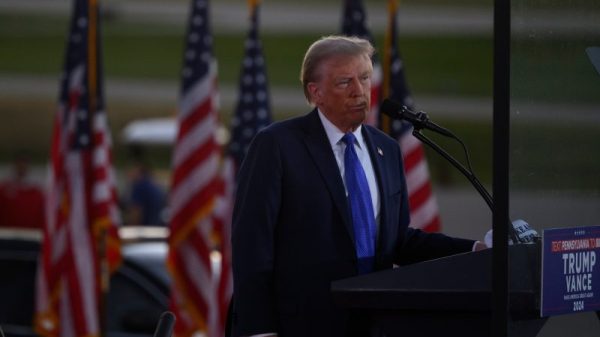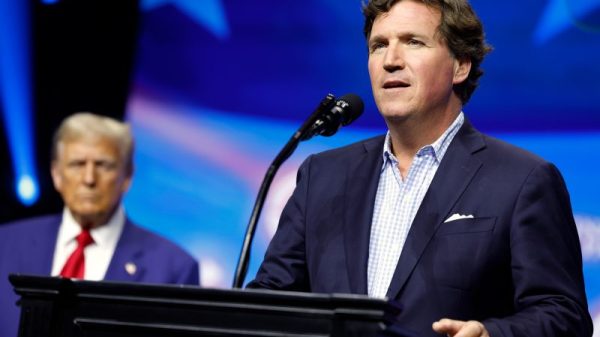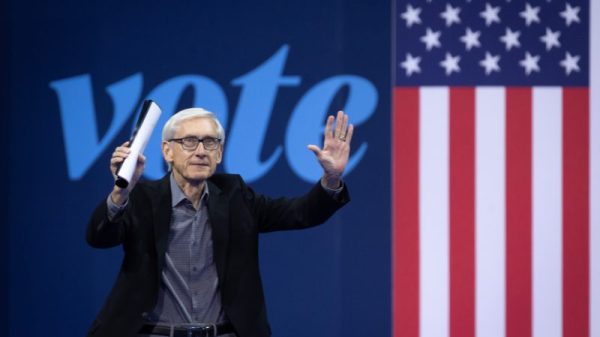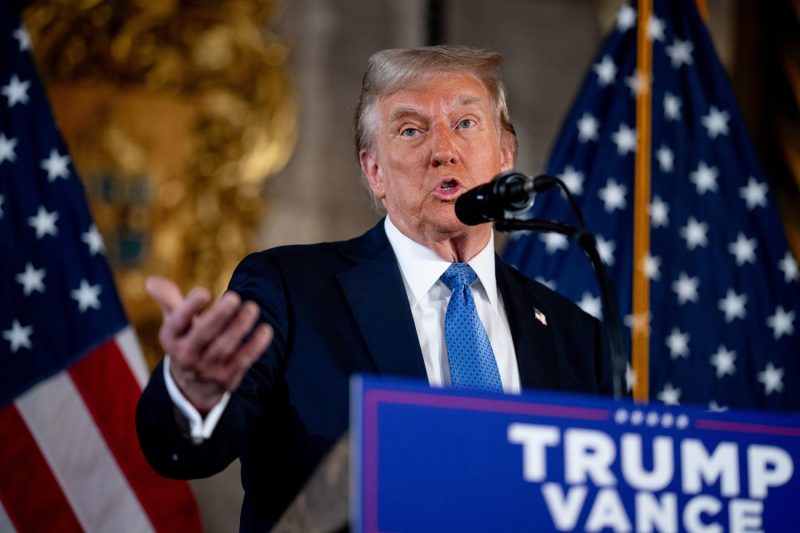The fate of President Joe Biden’s landmark climate legislation, the Inflation Reduction Act, is in the hands of the incoming Republican-controlled White House, Senate and House of Representatives.
At the White House level, President-elect Donald Trump has already nominated three people to posts in his administration who are likely to be key to the future of the IRA, if they are confirmed by the Senate: hedge fund executive Scott Bessent as Treasury Secretary, oilfield services company Liberty Energy CEO Chris Wright to lead the Department of Energy, and at the Interior Department, North Dakota Gov. Doug Burgum.
Any full repeal of the IRA would have to be passed by both chambers of Congress, where Republican lawmakers so far have been reluctant to completely discredit the law’s benefits. House Speaker Mike Johnson, R-La., told CNBC in September that he would use “a scalpel and not a sledgehammer” on the IRA.
There’s a good reason for this approach: As of late October, roughly three quarters of the clean energy investments that have been made with IRA funds benefitted congressional districts that backed Trump in the 2020 presidential election, according to a Washington Post analysis of data from the Massachusetts Institute of Technology and the clean energy think tank Rhodium Group.
But what future Trump Cabinet members would do is also “pretty profoundly important” to the future of the massive legislation, said Tanuj Deora, a former director for clean energy at the Biden administration’s Office of the Federal Chief Sustainability Officer. The agencies hold considerable power over the interpretation and implementation of the IRA’s programs and incentives, like tax credits and business loans.
A priority for Republicans going into 2025 is extending the expiring provisions of the Tax Cuts and Jobs Act of 2017. Trump is looking to extend the tax cuts within his first 100 days in office next year.
This extension would cost $4.6 trillion over the 10-year budget window, according to estimates from the Congressional Budget Office.
“In addition, Trump promised another seven to eight trillion in tax breaks during the last few weeks of the [presidential] campaign,” said Keith Martin, co-head of projects at the law and lobbying firm Norton Rose Fulbright.
The money for all this has to come from somewhere, however, and experts say provisions of the IRA are the most likely candidates for potential cost-savings. In an interview with the Financial Times last October, Bessent called the IRA “the Doomsday machine for the deficit,” suggesting that Trump could dismantle it to cut spending.
The IRA contains a range of targeted tax incentives designed to drive clean technology and energy production across the country.
Among them, the renewable energy tax credits, especially those for carbon capture technologies, domestic manufacturing and the green economy job transition are well-liked by Republicans, Martin said, and likely to be safe from any potential repeal efforts.
But the current phase-out dates for the IRA tax credits are likely to be accelerated, experts predict, and the Trump transition team is already in talks to completely dismantle a $7,500 consumer tax credit for electric vehicles.
Most of the final rules governing implementation of the IRA tax credits have either been finalized or are expected to be by the end of the year.
But there is still considerable fear that the remaining money could be rescinded, frozen or “awarded in ways that are aligned with a shift in priorities” in a new administration, said Julie McNamara, deputy policy director of the Union of Concerned Scientists.
“Theoretically, a future Treasury could reverse course on interpretation and implementation, but that would take a long time and would need to be justifiable and defensible if challenged in the courts,” she added.
The more immediate concern, experts say, is the future of the Department of Energy’s Loan Programs Office (LPO), which provides financing for green projects. While Wright has yet to voice an opinion on the LPO, several Republicans have called for scaling it back or doing away with it altogether.
As of November, private companies were seeking more than $300 billion in funding applications from the LPO. Beneficiaries of the loan program have included Tesla, whose CEO Elon Musk is co-heading Trump’s outside advisory council, the so-called Department of Government Efficiency.
The Inflation Reduction Act expanded the LPO’s lending authority and eligibility requirements for projects.
“I think that a lot of the private sector is very concerned about the loan program,” said Claire Broido-Johnson, co-founder and president of Sunrock Distributed Generation, a financier and developer of commercial-scale solar projects. “Everybody’s trying to slam as many projects as they possibly can into this process before the administration changes.”
With the boom in AI data centers, domestic manufacturing and electrification, the U.S. is facing “a significant challenge in meeting a growing demand for energy,” said Frank Macchiarola, chief policy officer of the American Clean Power Association, which represents renewable energy interests in Washington.
This demand can only be met by an “all-of-the-above” energy policy, Martin says, especially if Trump is planning to reduce energy prices by 50% within his first year, as he promised.
Trump’s potential Cabinet officials in the energy space are consistent with that message, according to both Macchiarola and Deora.
“Burgum has a pretty clear track record in being supportive of all kinds of energy investment and given the very real need for more energy infrastructure of all types, it seems hard to imagine that somebody of his background and his business competence and his governance competence would try to suppress any reasonable technology from being deployed as quickly as possible,” Deora said.
North Dakota is one of the leading states in wind energy, utilizing the source for more than one-third of the state’s electricity.
As for Wright, although he has denied the existence of a climate crisis, he worked in the solar industry as well as oil and gas, according to Trump’s statement announcing his nomination.
“He’s not necessarily against any technology, he’s just going to be for certain technologies,” Deora said.
Ultimately, an all-of-the-above approach to energy would effectively defeat the purpose of climate policy, even though it might sound reassuring to sectors that would be negatively impacted by a targeted attack on renewables.
“Climate change isn’t about how many solar panels we put up. Climate change is how much carbon dioxide and methane that we do not admit,” said Deora.
“The concern isn’t about whether we keep business and keep solar developers happy. This is really about, are we going to produce more fossil fuels?”





























